It’s interesting that partially electric cars (which are nearly “zero emissions” cars at the tailpipe) have fallen out of favor – with government regulators – because hybrids achieve nearly everything regulators insist is absolutely necessary, such as very high fuel efficiency and extremely low emissions . . . at a price point that makes it feasible for almost anyone to afford one.
That ought to matter – if there’s a “crisis” – because it means lower overall emissions (and fuel consumption).
As opposed to electric-only cars – which cost so much that only a relative few can afford to buy them. Even if their emissions are in fact “zero” – and this is questionable – does it make more environmental sense to get say 1,000 people driving one of these rather than 10 people driving an EeeeeeVeeee?
What It Is
The Insight is Honda’s less-well-known alternative to the Toyota Prius and other compact-sized hybrid cars. Like the Prius and other hybrid cars, it has an electric motor and a battery pack to power it – just like an electric-only car. But it also has a small, extremely efficient gas-burning engine that eliminates two of the big (and inter-related) problems with electric-only cars: Running out of range and having to wait for a charge.
The Insight’s range is close to 600 miles on the highway – and you’ll never have to wait longer for a charge than it takes to gas up a non-hybrid car.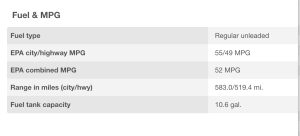
It is also one other thing that EeeeeeeeeVeeeees aren’t, which is affordable.
Prices start at $25,760 for the EX trim – which is about half the average cost of a new EeeeeeeVeeeee.
A top-of-the-line Touring trim – with heated leather seats that don’t reduce your range if you use them in the cold – plus a 10 speaker premium audio system, sunroof, LED lights and various other upgrades – stickers for $29,790.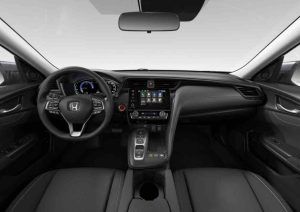
What’s New For 2022
The previously available LX trim has been discontinued. This version of the Insight was much less expensive (just $22,930 to start) than the current EX trim and the Insight’s chief rival and cross-shop, the Toyota Prius (which stickers for $25,075 to start).
What’s Good
Extremely high efficiency and very low emissions without the cost or functional limitations that beset electric-only cars.
More backseat room (and power/performance) than Prius offers.
Conventional small sedan layout doesn’t call as much attention to itself as Prius’ look-at-me-I’m-a-hybrid looks.
What’s Not So Good
Big price bump for 2022 takes away one of the Insight’s strongest selling points vs. Prius.
Small trunk – due to conventional small sedan layout.
AWD isn’t available (Prius offers it as an option).
All Insight trims are powered by the same 1.5 liter gas engine that keeps a lithium-ion battery topped off with electricity that powers an electric motor, that (in turn) provides supplementary/on-demand power for extra-acceleration when needed and enables the gas engine to be powered off when it isn’t needed – as when the vehicle is coasting, stationary or moving at low speeds.
The combo produces a total of 151 horsepower (significantly more power than the 121 horsepower produced by the Prius’ 1.8 liter/hybrid powertrain).
And the result is 55 miles-per-gallon in city driving and 49 miles-per-gallon on the highway – as well as the ability to travel more than 500 miles on 10.6 gallons of gas, which can be refilled to full in less than five minutes at any gas station. As opposed to having to wait at least 30 minutes at a “fast” charger (for an EeeeeeeeVeeeee) . . . if you can find one.
If you do find one, that’ll only get you 80 percent “full” – because “fast” chargers are set up to stop “fast” charging after reaching 80 percent charged, in order to reduce the risk of damaging the EeeeeeeeeVeeeeeee’s extremely expensive-to-replace battery pack. Which, by the way is probably not going to last as long as a hybrid’s battery pack because the EeeeeeeeVeeeeeee’s battery is the sole source of power for the EeeeeeeeVeeee and if the EeeeeeeeVeeeee’s owner wants to make regular use of the maximum (or even most) of the range touted by the EeeeeeeeeVeeeeee then the battery will be regularly and heavily discharged.
The “faster” the harder it is, on the battery. Which will eventually lose its capacity to retain a charge. And then you will have to pay to replace it. Or pay to replace the EeeeeeeVeeeeee.
Hybrids have battery packs, too. But they share the load of powering the car with the engine – and the engine serves as a carry-it-with-you generator that prevents the battery pack from ever being heavily discharged by constantly “topping it off,” as you drive. That is why hybrid taxis regularly go 200,000 or more miles before needing a new battery pack.
The Insight’s main rival – the Prius – touts slightly higher mileage (58 city, 53 highway) as well as more than 600 miles of highway range. However, the Prius carries a bit more gas (11.3 gallons) than the Insight, so the range of the two cars is actually almost identical.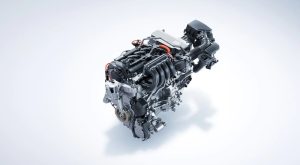
What the Prius does offer that the Insight doesn’t is plug-in capability. Meaning, you can trickle (not “fast”) charge the car at home, using an ordinary 120 volt household outlet without burning any gas to do it – just like an EeeeeeeeeeeVeeeeee. But without having to plug it in – as you do with every EeeeeeeeeeeVeeeeeee.
The Prius is also available with all-wheel-drive, while the Insight is front-drive only. This may or may not be an issue for you, depending on where you will be driving your car. Front-drive is actually very grippy in the wet and snow, especially if the car has snow tires. And AWD is less grippy than you might think, if the car sits low to the road – as both the Insight and Prius do. The latter sits even closer to the ground (just 5.1 inches) than the Insight, which has 5.9 inches of ground clearance.
Either way, it probably doesn’t matter – as neither has enough clearance to drive over deep snow.
The Insight’s standard and only transmission is a continuously variable (CVT) automatic – a type of transmission that never shifts through gears but instead varies through the ranges – the idea being to make optimum use of the engine’s power at any given road speed, without the efficiency losses associated with having to shift up and down, from gear to gear.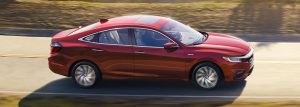
On The Road
It take an Insight about 7.7 seconds to get to 60 MPH – far from “ludicrous” speed. But the Insight keeps on going for much longer than any EeeeeeVeeeee.
If you were to race a “ludicrous speed” Tesla Plaid from say Washington, D.C. to Miami, Florida, the Insight would blow the Tesla’s doors off – in terms of who’d get there first. Because of all the waiting – at “fast” chargers – the Tesla’s driver would be doing while the Honda kept on moving.
The Honda is also much quicker (because it is stronger) than its main rival, the Prius – which needs more than 10 seconds to get to 60. 
This is worse than it sounds, too. The Prius has almost no power left in reserve for maximum effort acceleration and must use every bit of power it has to accelerate at all. The Insight doesn’t have to use (cue Scotty from Star Trek voice) everything she’s got to get you going. There is usually some reserve left, which can be called on when maximum-effort acceleration is needed.
But what’s most relevant as regards the Insight – and the Prius and other hybrids – is not being tethered to a cord. This is a car you just get in and drive – like any other car. Unlike an electric-only car. Which must be driven with the thought always in mind: How much farther can I go before have to stop? Have I got time to stop – and wait?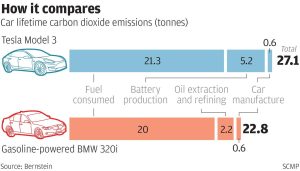
And – for what?
If you consider the facts, the exhaust “emissions” of a hybrid are already close to zero. Yes, the very small, very efficient combustion engine “emits” a little carbon dioxide when it is running. But it is fatuous to insist that driving an electric-only car doesn’t cause the same – or more – because the utilities that create the electricity overwhelmingly combust hydrocarbon fuels to generate it. The “emissions” are produced – just elsewhere.
And because most EeeeeeeVeeeees consume a lot of electricity – because most are designed to deliver high-performance acceleration.
The Insight is designed to deliver adequate acceleration. Thus, it has a small engine – and a smaller battery than a pure electric car. It burns less hydrocarbon fuels because it requires less electricity.
And so – on balance – a hybrid like the Insight very likely results in lower overall C02 “emissions” than a pure electric car.
This is not talked about much. Instead, what is talked about a lot is how “ludicrously” fast EeeeeeeeVeeeees are. How impressively they compress your spine. That is a sexier sell than efficiency and practicality.
But it speaks to the fatuity of the supposed reason for replacing regular cars and hybrid cars with EeeeeeeeeVeeees. If there truly is a “crisis” of the “climate” then it is just as morally wrong to manufacture and sell high-performance, energy hog EeeeeeeeVeeees as it is to manufacture and sell V8 SUVs.
Since we’ve been comparing hybrids with EeeeeeeVeeees, let’s do that some more.
The Insight is a compact-sized car, about the same overall length (183.6 inches) as a Honda Civic sedan. And so is a Tesla Model 3, which is 184.8 inches long. It has the advantage – over the Insight – of being a hatchback, which endows it with a bit more cargo-carrying space (22.9 cubic feet) than the Insight sedan’s 15.1 cubic foot trunk. But it’s not a big difference.
The Insight has 37.4 inches of legroom for the rear seat passengers, comparable to that of many mid-sized cars. The Tesla 3 has a compact-car’s rear seating area, with only 35.2 inches of legroom for the passengers. The Toyota Prius is even worse in this respect, with only 33.4 inches of legroom for the backseats.
That’s four inches less legroom than the Insight offers.
The Prius – which is also a hatchback – fires back with 27.4 cubic feet of space behind its cramped second row. And if you fold those second row seats flat, this expands to 50.7 cubic feet, comparable to many smaller crossover SUVs.
Bu the biggest difference between the Insight and the Prius is that it doesn’t look like a hybrid.
The Prius – which was the first mass-produced hybrid – was made to call attention to itself, because hybrids were new, once – and when you’re new you want people to notice. But not everyone wants to be noticed, including people who want to own a hybrid. The Insight is the hybrid for such people. It is functionally very similar to the Prius but cosmetically, it goes unnoticed.
Just another small sedan.
That happens to use a third less gas than other small sedans.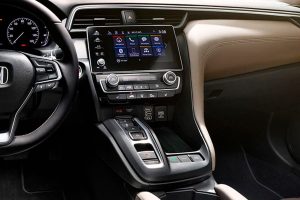
The Rest
It’s odd that Honda discontinued the lowest-price LX trim, which not only gave the Insight big points vs. the Prius on value but made even the “lowest cost” EeeeeeeeVeeeee look economically ridiculous. Let’s see . . . $22k for an Insight that goes 500-plus miles on a tank and only takes a few minutes to fully refuel at any gas station . . . or a $25,600 Chevy Bolt (the least expensive EeeeeeVeeeee for 2023) that goes maybe 259 miles before it takes about 8 hours to trickle-charge at home, if I haven’t got time to drive to (and from) a “fast” charger and wait 30-45 minutes there to recover 80 percent charge . . .
The Bolt is also a family-useless subcompact about two feet shorter than the Insight, yet weighs almost two tons (about 1,000 lbs. of that being the very expensive battery pack) and never mind the recalls to deal with the catching-on-fire issue.
So, why did Honda raise the price of the Insight? Could it be a sign of the times – i.e., a sign that hybrids are now to be discouraged to “encourage” people into EeeeeeeVeeees, by making alternatives to them pricier to make the EeeeeeeeVeeeeee seem “affordable”?
The Bottom Line
Hybrids like the Insight may not technically be “zero” emissions. But their total “emissions” are likely less than those of EeeeeeeVeeeees – in part because more people can afford to buy them than EeeeeeVeeeees.
Get one before they’re banned, too.
. . .
Got a question about cars, Libertarian politics – or anything else? Click on the “ask Eric” link and send ’em in! Or email me at [email protected] if the @!** “ask Eric” button doesn’t work!
If you like what you’ve found here please consider supporting EPautos.
We depend on you to keep the wheels turning!
Our donate button is here.
If you prefer not to use PayPal, our mailing address is:
EPautos
721 Hummingbird Lane SE
Copper Hill, VA 24079
PS: Get an EPautos magnet or sticker or coaster in return for a $20 or more one-time donation or a $10 or more monthly recurring donation. (Please be sure to tell us you want a magnet or sticker or coaster – and also, provide an address, so we know where to mail the thing!)
My eBook about car buying (new and used) is also available for your favorite price – free! Click here. If that fails, email me at [email protected] and I will send you a copy directly!


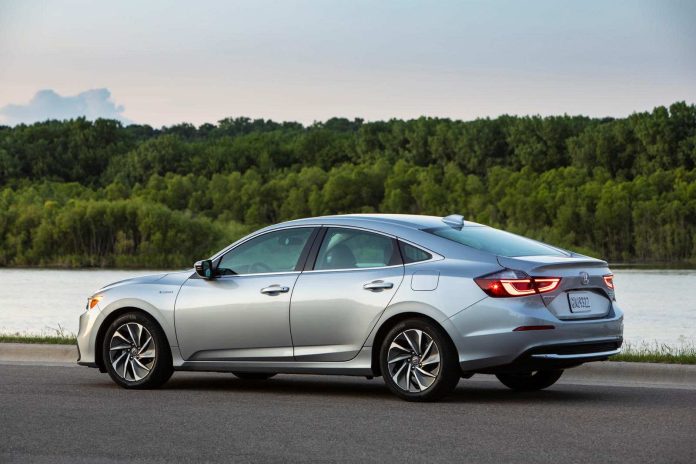



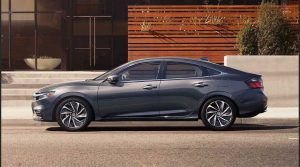








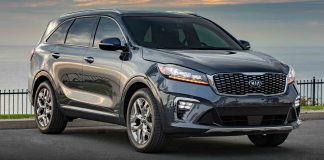
Electric car chargepoint operator Osprey ups rates to record £1 ….$1.13 per kWh making it pricier than fuelling a petrol model
https://www.thisismoney.co.uk/money/electriccars/article-11211957/Electric-car-drivers-warned-plug-network-costs-set-soar.html?fbclid=IwAR1yUn8nFr5LOkLf5IzcQ53reBqD1Y_eHMHcjTI-rLtEd3j-KBtD5BvIVeYAn
EV costs more per mile for fuel then a VW ice diesel, and emitts more pollution more per mile then a VW ice diesel.
So they ban the diesel and force you to buy an EV = insanity.
At those prices an EV costs 10 X more then this diesel per mile, including the battery use it costs 14 X more per mile
VW diesel 100 mile fuel consumption = 1.36 gallons @ $4.00 gallon = $5.44 = $0.05 per mile
EV 100 mile fuel consumption = 41.66 kwh @ $1.13 = $47.97 = $0.48 per mile
The $47.97 isn’t the only cost…….the tesla $22,000 battery is used up, worn out in 100,000 miles.
ATTENTION: this works out to $22.00 per 100 miles it is costing you for the battery.
Add the $22.00 to the $47.97 = $69.97 = $0.70 per mile
The Volkswagen Golf BlueMotion has emissions of 85g CO2 per km. it is even cleaner (less emissions) than a Toyota Prius or an EV….
A current-model large EV car with a battery produced and charged in an average European Union country emits about 88 grams of CO2 per kilometer,
A law might come out forcing EV owners to buy a 2014 Volkswagen Golf BlueMotion diesel to help reduce emissions….lol
$1.13 per kWh….coming soon everywhere…lol…or worse…
“Emissions.” Let’s remind folks that there’s a difference between “emissions” and pollution. The government and media have people believing that all emissions are pollution. (Indeed, it is believing and not thinking.) Thus, the liars get away with the absurd “zero emissions” goal.
Carbon-dioxide (CO2) is an emission. CO2 is not pollution. CO2 is plant food. We, ourselves, exhale it. But the liars say it’s a “carbon emission” as if it is pollution.
Water is an emission, since it is something that comes out of the tailpipe. Water is not pollution.
There’s very nearly nothing else coming of our tailpipes. What does come out is absolutely not significant.
Our illegitimate Rulers are not denying themselves vehicles that are gas hogs and otherwise energy hogs. They just want to deny US of even our normal and sensible vehicles.
Our illegitimate Rulers know these simple undeniable facts about “emissions,” “pollution,” CO2, etc. And their cousins in the media know, too, as shown by their deliberate avoidance of asking the obviously important questions and their deliberate avoidance of airing the true facts and exposing the outrageous lies. Even the car magazines and their websites support the outrageous lies.
Thus, they are working together. As your previous article asked, “Incompetent or Malicious,” the answer can only be Malicious.
Hey Eric – you mentioned the Insight comes with a CVT. I thought all these things had direct drive electric motors to take advantage of their torque, why bother with a tranny?
Hi Mike
Most hybrids use CVTs; the electric motor provides supplementary power, often by powering the rear wheels (as in an AWD hybrid).
Mike,
Newer Honda hybrids use an eCVT. Not the belt driven type that are known for failure. They’re similar to the toyota synergy drive as they use two motor/generators. ECVT’s mated with low stress atkinson cycle engines are incredibly reliable mileage wise. They will all need a hybrid battery replacement eventually though and CAN NOT operate without one like the earlier honda IMA system or Hyundais hybrid assist motor that help the engine drive a regular transmission.
See a detailed video on hondas ecvt transmission from a crv.
https://m.youtube.com/watch?v=QLUIExAnNcE
I’m driving a rental Chevy Malibu this week. It gets about 35 MPG mixed according to the trip computer. The CVT is… interesting. I kind of like it because of the constant power delivery but can see how the engine revs to one spot and stays there might be objectionable to many people used to a 3 or 4 speed transmission. But compared to an 8 or 9 speed always hunting around for the right gear I pretty much prefer it. However this is a rental, not something I’d buy. The stories of transmission repair (actually scrap and replace) would discourage me from buying one.
GM really screwed up when they ended the Volt.
I’m glad you brought up tires.
The previous generation (and probably this one too) had low rolling resistance tires. Which are made of a harder rubber. It bumps up the gas mileage slightly, but this comes at the expense of traction (kind of important but especially in snow & ice).
I will say that the previous generation Insight was surprisingly fun to drive although the back seat is kind of small.
I’d buy one if I had to, beats an eeeeveee, but I wish it came with a 3rd pedal.
Publius,
Ever heard of a CR-Z? They come in a 3 pedal variety. Not as good gas mileage as the new insight but if I wanted ultimate MPGs I’d hunt for a 1st gen manual insight. They get near 70mpg!
Edit- comment was for markymark below! D’oh!
I don’t think they make those any more.
Eric,
This is the FIRST I’m hearing about the Honda Insight! I didn’t want a Prius because of its inadequate acceleration and its “look at me!” looks. A few years ago, I rented a Ford Fusion hybrid, and I liked it very much; I could go for a sedan style hybrid like this. Why didn’t Honda promote this car more?
Hi Mark,
Yup. Honda doesn’t publicize the car much – which is tragic given how genuinely practical it is.